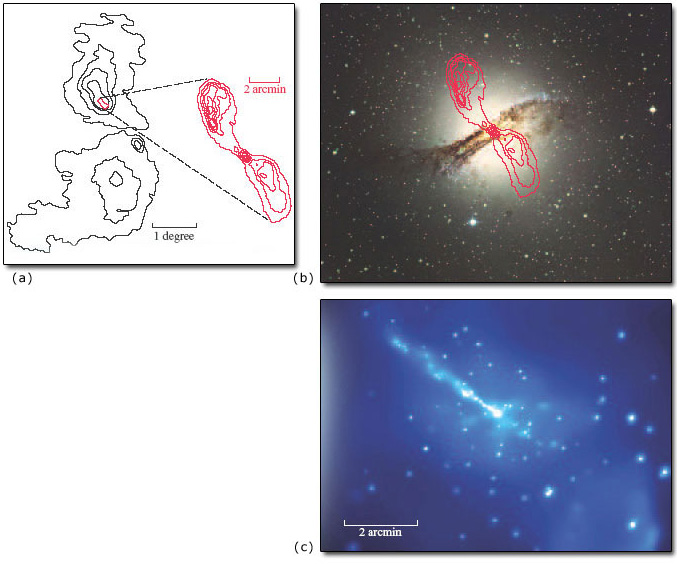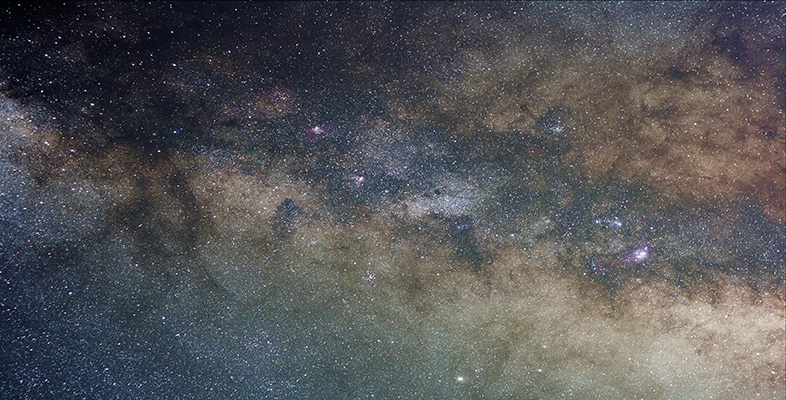
From Peculiar Galaxies, Chapter 5 in Foundations of Astronomy by Michael A. Seeds, Wadsworth Publishing Co. Inc., 1988 (2nd edn.); © 1987-2002, Anglo-Australian Observatory, photograph by David Malin; NASA/SAO/R. Kraft et al. ©
From Peculiar Galaxies, Chapter 5 in Foundations of Astronomy by Michael A. Seeds, Wadsworth Publishing Co. Inc., 1988 (2nd edn.); © 1987-2002, Anglo-Australian Observatory, photograph by David Malin; NASA/SAO/R. Kraft et al.
Figure 23: The Centaurus A radio galaxy. (a) A radio map shows the lobes that extend over more than 9 degrees of the sky. (b) An image at visible wavelengths shows that the host galaxy is an elliptical galaxy with a dust lane bisecting it (the inner radio lobes are shown superimposed on this image). (c) An X-ray image from the Chandra X-ray Observatory clearly shows the jet and the point-like nucleus in the inner parts of the galaxy
